Two Years of Racing on Compass: Interview with Matt Surch
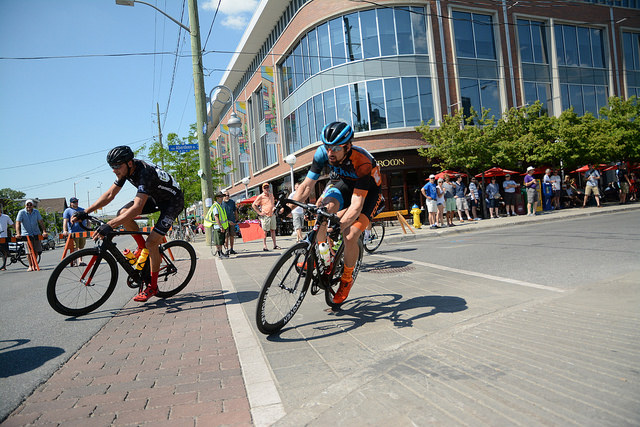
Long-time Bicycle Quarterly reader Matt Surch (above) put his name on the map when he won last year’s Steaming Nostril gravel race on Compass Bon Jon Pass tires. We checked back in with him to see how the tires performed in the year since then, and to hear about his road racing on Compass Cayuse Pass tires.
JH: With another season of riding and racing on the Bon Jon Pass tires, how do you feel about them?
Matt Surch: Frankly, the Bon Jons have been exactly what I’ve been hoping for in a gravel tire. This comes down to two key aspects: 1) volume – 35 mm is perfect for so much of the riding I do off paved roads. 2) tubeless – I love this format for its road feel and flat resistance. One of the things I’m really enjoying with the Bon Jons is that they are perfect for the rides where I head out the door without much more of a plan than to ride fun stuff. That tends to mean taking paved roads up to Gatineau Park, then piecing together spans of trail, some of which are very old dirt roads, in novel ways. I just go where I feel like going, try branches I don’t know, discover things. While the 32s are a bit small for rides like this, and the 38s bigger than required, the Bon Jons are the Goldilocks option: just right.
The Bon Jon has become my go-to for gravel, and I have them mounted on wheels that are on my cyclocross/gravel bike all summer. I have a pair of 32mm extralight Stampede Passes on another steel all-road bike for paved rides that I don’t need my aero road bike for.
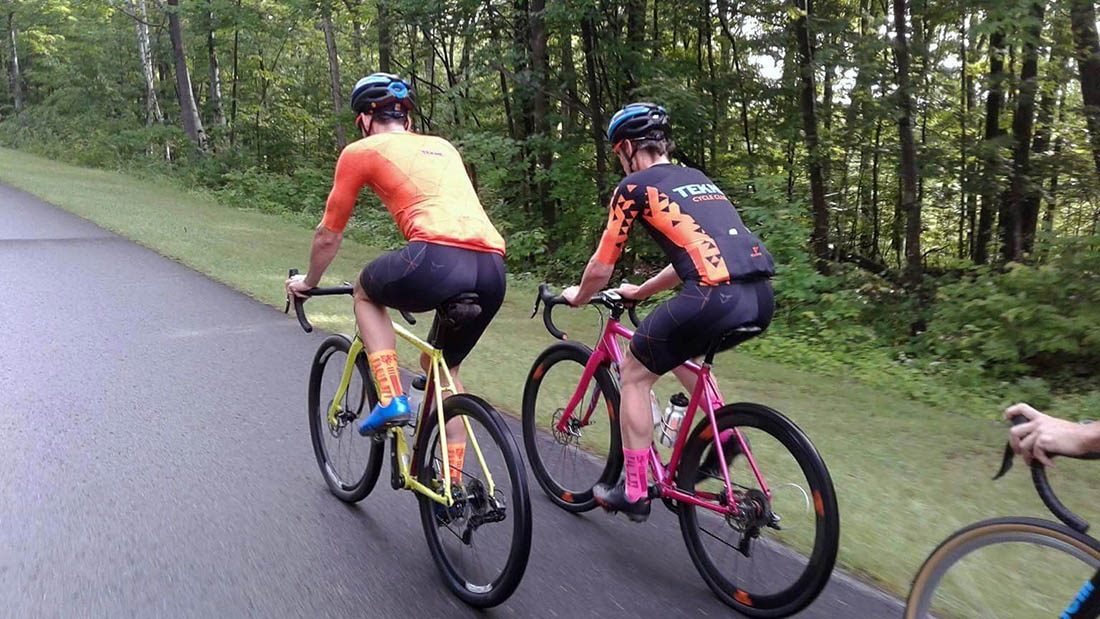
Tell us about some memorable rides or races on these tires.
Sure, I have a couple that come to mind, from perhaps opposite ends of the spectrum. The first was our big annual local criterium in Ottawa’s Little Italy neighborhood, the Preston Street Criterium. This was the 44th edition of the race, which draws the best crit racers from Toronto and Montreal, in addition to our locals. I can still remember the first time I visited the crit, about 15 years ago, with my friend and longtime Compass tire evangelist, Rodd Heino. I barely touched my road bike then, and didn’t even consider racing.
I only took up racing criteriums in 2015, in fact, after waiting until I was sure I could ride at the front of the local training races as much as I needed in order to stay safe and learn the ropes. So last year, on Father’s Day, I raced the Preston St. Crit for the second time in the ‘Pro’ race. As I’d been doing all season, I was on the 26mm Compass Cayuse Pass Extralight tires on my Cervelo S5 aero road bike, mounted onto 55 mm-deep carbon Woven Precision Handbuilts wheels. This is a pretty aerodynamic set-up, and I’ve been very happy with this combination.
The race was pretty incredible. I missed the breakaway of 4 guys that went out about 30 minutes into the race, and decided to bridge up to them. One rider came with me, and we worked really hard together over the longest 8 minutes of my life to connect. The whole time friends and family were cheering me on so hard from the sidelines. I actually feel emotional as I write this….
We rode the rest of the race as a group of 6, ultimately lapping the field. Into the final turn I felt good and was positioned third, behind the two best sprinters. In an instant, I was sliding across the pavement. I’d slid out, not focusing enough on my cornering technique as we hit the final turn faster than any other lap. I lost a lot of skin and literally burned through my much-loved Giro SLX shoe, but my bones and bike were fine. My family found me, and they and a few guys from The Cyclery, one of Ottawa’s best bike shops, took care of me. I jumped back on my bike to salvage 5th, which was a bit of a consolation (I made a bit of money to help pay for repairs to my kit), but was just really happy to have delivered a peak performance that was only marred by one mistake. And having my family and everyone there supporting me was really special.

The other day that stands out was rather different. Iain Radford (fellow Compass devotee) and I decided to organize a gentleman’s race over an awesome road/off-road route at the beginning of July. Some of the most fun we’ve ever had on bikes has been when riding this format – teams of 4-6 riders team time trialling a big, hard route, unmarked, unofficiated – so we wanted to put one on. Our Ride of the Damned event is run in a team format, too, but it’s not a race. This time, we wanted to race.
We sketched out a route for a recon ride at the end of June and hit it up as a group of 4 on a rainy Sunday. I was on the 38 mm Compass Barlow Passes, Extralight (above), with Challenge latex tubes. I ended up with a tiny puncure on a rock, which I put down to the tubes being stretched so thin. The feel of the route wasn’t quite right, there was too much pointy rock on some of the sections of trail we used, which really interfered with the flow of the ride. We opted to tweak it, removing the pointy rock bits, and landed on a 117 km route that alternated between pavement, trail, and dirt road sectors.
On the morning of the event, El Camino, we had ten 4-man teams pre-registered, and we all headed off at roughly one minute intervals. My team was well balanced, and we leveraged our strengths well, riding mellow on the climbs, and absolutely drilling it everywhere else. It was a really hard effort on the bike, but so much fun! I’d opted to run the Bon Jons in tubeless format instead of the larger 38s with tubes, and this worked perfectly. Iain punctured, which saw us passed by a number of teams, then we chased them back down. It was exciting! At the end of the day we secured the fastest time, 3:51, beating our goal of 4 hours.
But the fun didn’t end there. We had everyone bring BBQ stuff, and got the grill at the park going for a great party after the ride. It was really simple logistically, and tons of fun hanging out after the ride as teams streamed in. Of all the racing I’ve done, this format is the most fun, I love it. Rather than a team working for one rider, everyone contributes to the whole team’s result. It requires a lot of strategy, it’s a bit of an art, like team trialing on the road, but more technical!
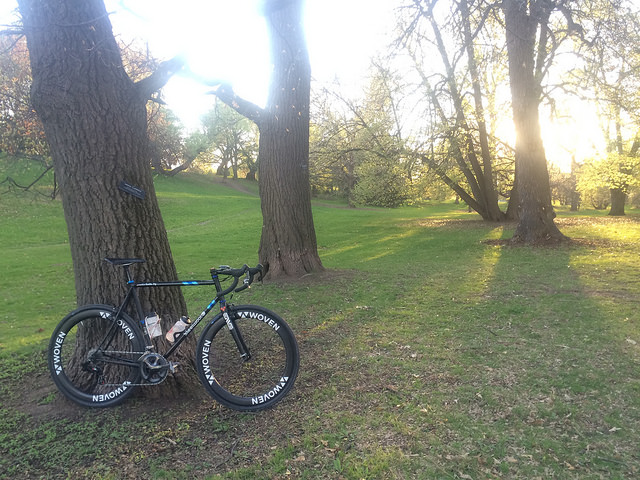
You run the tires tubeless. Any tips on how to set them up? What rims do you use?
Yes, I run the Bon Jons tubeless. I’ve had them on 55 mm-deep carbon Woven Precision Handbuilt wheels (above), which use a different tubeless bead design, so there has been a bit of a learning curve. The wheels are designed with a fairly deep centre channel for easy of tire mounting, with a tubeless bead shelf that has a lip on the inside, along the channel, for the tire bead to climb over when inflated. Early on, I realized that I needed a bit more tubeless tape than required for sealing the rim. I was having some trouble airing the tires up, which can be caused by a weak compressor or obstruction in the valves. I added another layer of tape (Gorilla tape, in fact) to see if that’d do the trick. It did, the tires mounted immediately when I beefed up the channel this way. So this is my #1 tip: if you don’t have a snug fit at the channel, add tape and try again.
The other tips are standard:
- Use a bit of water on the bead when mounting, it really helps. I don’t bother with soapy water, but just grab a bottle and drop some onto the tire.
- Remove the valve core of your tubeless valve when mounting the tire. I use the air-gun nozzle on my air compressor, sticking it into the valve. This allows more air to pass through.
- Don’t put sealant into the tire until you’ve mounted it. Trust me on this, you don’t want that stuff spraying all over you, it stains! Air up the tire, get the beads locked in, then use an injector to put sealant into the tire. I use one scoop of Stan’s regular formula sealant.
- You really need to shake the tires all over the place, especially on their sides, to get complete sealing. I’ll do that, then rest the wheel on its side for an hour or more, then flip it. This works well. Sometimes you actually need to ride a tire a bit to get it to seal. This isn’t a Compass-specific thing.
- If you don’t have an air compressor or access to one, yes, you can use CO2 to air up your tubeless tires. Obviously, this is wasteful and more costly than using a compressor. But it will work for a tire with a tight enough bead. DO NOT inflate with CO2 with sealant in your tire; the sealant will solidify into a ball. If you use CO2, let it all out after locking the beads, then replace with air.
- If you use a carbon rim, don’t overtighten your valves. If you do, you can deform the brake track, which you’ll feel under braking. Silca makes a nice valve set with a fairing that helps reduce the possibility of creating this deformation.
- If you don’t ride wheels you’ve set up tubeless often, your sealant will dry up sooner than if you ride it regularly. If you only use one scoop of sealant, odds are it’ll be mostly dry when you’re riding. You’ll want to make sure you keep some liquid sloshing round in the tires. Always bring at least one spare tube, two for more risky rides.
- Tubeless sealant really only seals small holes, like those from glass, thorns, wire. Medium-sized (a few mm long) can sometimes be sealed with the help of some cotton or similar fabric. Cut some small strips from scrap fabric at home (I’ve recently tried a cloth number plate/dossard) and pack them into your flat kit. If you puncture, try poking that fabric into your tire to create a dam for your sealant to seal around/soak into. This is best done while the tire is still fairly well inflared. I’d have this work, as have others, it’s worth a shot.
- You’ll need to air the tires up pretty high to get the beads to seat – this is normal. Bring the pressure back down to where you like it after seating the bead.
- Experiment with your air pressure. For very light tires like the extralight Compass Bon Jon, the sidewall is so compliant you’ll need a bit more pressure – with tubes or not – than you might imagine. Start on the firm side, then gradually drop your pressure during a ride until you find the best balance of ride feel you are looking for.
- Experiment, this is how you’ll get the most from your tires, and remember, tires cut more easily when their pressure is high.
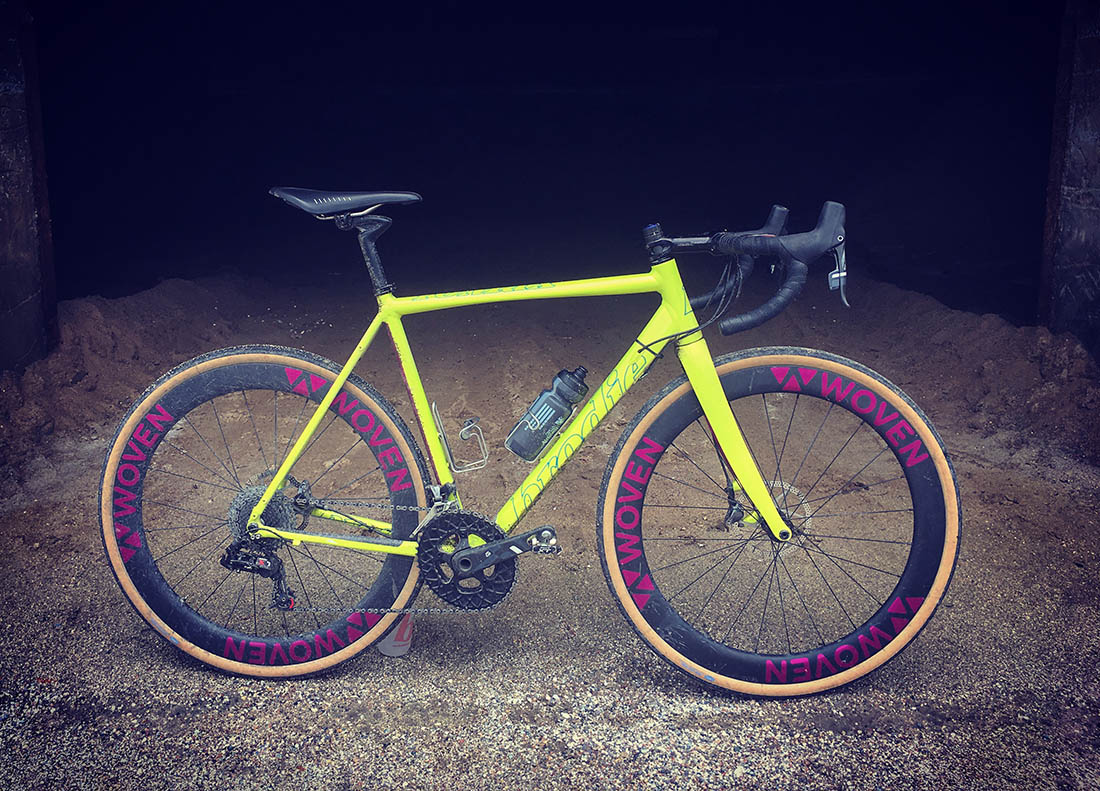
Are you still on your first set of tires? Or if you replaced them, how many kilometers/miles did you get out of them?
I’m on my second set of Bon Jons now, but after 3000km my first pair are still rolling on my old bike. I mounted a fresh pair of the tan-walls on my new Brodie Romax (above) in the spring, and they’ve been perfect ever since.
Any durability concerns?
No, I have had no durabillity concerns whatsoever, I’ve been really pleasantly surprised. I find climbing is the toughest on tires for wear, and most of the climbing I do on this bike is on unpaved roads, which is why I think I’m getting quite good wear out of them. Because the tread wraps around the tire well, I don’t have any sidewall damage, which is somewhat incredible considering some of the trails I’ve ridden!
What tire pressure do you run? And how much do you weigh?
I weight about 172 lbs in the spring… up to about 177 lbs during the season. I used to run 50 psi rear, 47 front on the Bon Jons, but now I tend to run closer to 40. I spent a week in South Carolina riding big climbs and fast descents, and settled on about 55 psi in the 32 mm tires, which felt fantastic in the turns…
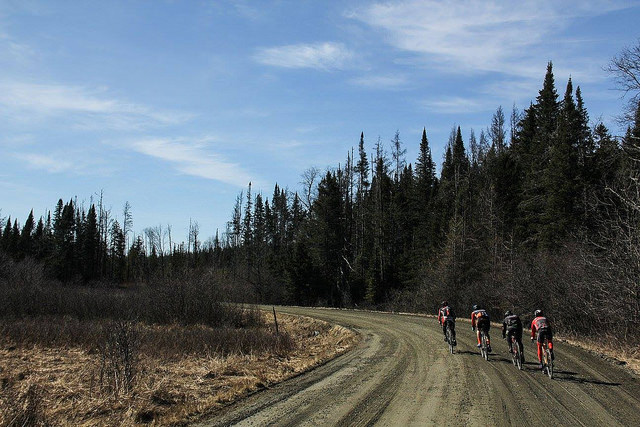
Our tires have a tread pattern that is optimized for road use. How do you find their grip on dry gravel?
Yeah, good question, I think this is something a lot of people are wondering about. I learned years ago at the Deerfield Dirt Road Randonnée that tread doesn’t do much for you on gravel. I rode 28 mm Grand Bois tires the first year there, then the 32s. Same tread, more volume with the 32s. On the descents, I didn’t have grip issues with either, but the loose climbs were always where the challenge lay. It was clear that more volume, more tread on the surface, was key. So I kept going up in size as I was able to get bigger tires on bikes, and confirmed that volume is all that matters for gravel. When the substrate is not locked in place, knobs have no effect. It’s like snowshoeing: all about surface area.
The tricky part comes when we need to deal with routes that have a mix of surfaces: pavement, gravel/dirt road, and trails. Trails, when gravelly, are fine with no tread. But knobs become useful if they have something to cut into. Slick patches of mud are an example. The standard Compass tread is scary on these, one has to ride completely upright. A bit of tread can cut through a bit of mud and dig into dry dirt below. On snow and grass, a little tread goes a long way too. At the Steaming Nostril race last year, we had some grass on the course, and I really had to use a lot of energy to keep moving with just the “Road” tread. But it was worth it! On the snow side – I know some are thinking, ‘What the….’ – the 2015 Rasputitsa Gravel Road race had an extended packed snow/ice sector that we absolutely HAD to use a file tread tire for. That was a shame, as the rest of the course would have been faster on the Compass tread.
On the El Camino route we capped things off with a very steep gravel trail climb, which kicks up to 23% in grade. With the Bon Jons I made it up, despite having no knobs on the tire. It was more a matter of smooth power transmission than tire grip.
When we face exposed rock, especially wet, we also tend to want some tread. A file tread tends to work well for this, as they have so many little edges.
I’ve recently spend some time on the 650B Switchback Hill 48s and 42 mm Babyshoe Passes, since my new cyclocross / gravel bike has disc brakes; I can run different wheel diameters. Both these tires climb really well on loose surfaces, due to their volume. That volume can also make them a little skittish on corners with pebbles over hardpack, which allow narrowed tires to cut to the firm surface more readily. That’s not a matter of tread, but width. I’m very much looking forward to trying the new Pumpkin Ridge 42mm 650Bs on mixed terrain, which will definitely work well in mud.
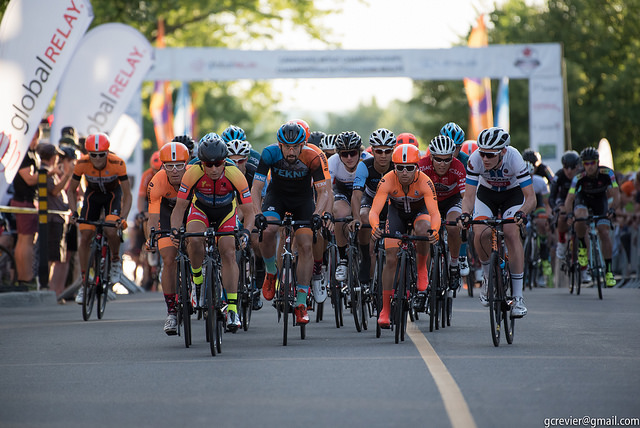
During the road racing season, you’ve been riding our Cayuse Pass 700C x 26 mm tires. How have those tires worked for you?
I’ve been riding the 26 mm Cayuse Pass tires on my Cervelo S5 aero road bike for almost two seasons now, and they have been somewhat transformative. Previously, I used Hutchinson’s tubeless tires on the bike, which were wooden, but reliable. In 2015, I used Continental GP4000s and Michelin Pro Race 4s. I punctured all but one of these tires badly enough to write them off. They were all 23 mm tires on my 19 mm (internal width) Woven wheels. While the Contis test very fast for aerodynamics and rolling resistance on rims like mine, in practice, I found them ill-suited.
The problem is that their tread – and this is true for the Michelins too – does no wrap around the casing enough to protect the tire’s casing. The tires handled well, somehow, but I had all kinds of flats on the shoulder of the tires. Because they were 23 mm tires (their 25s were too big for my frame/fork), they were somewhat squared off on my rims, and I had to run 100psi to avoid pinch flats. But this created too much casing tension, which makes it easier to cut the tire! In the spring, I was delighted to discover that the 26 mm Cayuse Pass fit my bike, so I’ve been on them all season. I experimented with pressure, working down from 95 psi to 80, where I’ve stayed. Wow, what a difference! I’ve got more grip, lower rolling resistance, and my bike feels so much more comfortable than it used to. I thought it would always suck on long rides, especially on typical roads with cracks, but I’ve found myself grabbing the bike so much more often, because it feels good. I’ve had only one flat on these tires in about 5,600 kms, a pinch on a pothole in the dark. I’ve still had no flats on the Bon Jons.
So, on top of being far more reliable than what I used to use on my road bike, I’ve found the Cayuse Passes roll really fast, and any aerodynamic hit I’ve taken as a result of them being a little wide for my rims and taking up more space within my frame and fork are outweighed by their fast rolling, grip, and reliability. I’m stoked to be on these tires, and don’t plan to change. I used to wish for a tubeless version of these tires, but now I am happy to stick with latex tubes. It’s hard to argue with no punctures in two years.
I wish I had a power meter, because I’d love to compare the Bon Jons on my CX bike against the Cayuse Pass. They feel slower on smooth paved roads, but I want quantification of the difference, ideall on the same bike. When it comes to our highest speed and intensity races, the crits and road races, I still feel I need to favour my system’s aerodynamics, and the 26s are the max I can fit in my Cervelo. But what if that bike was designed to be optimal with 28 mm, 30 mm, or 32 mm tires? Would it be as fast? I wish I could find out…
You’ve been trying the knobby Compass Steilcoom tires lately. How did that go?
I wanted to use the Steilacooms at the Steaming Nostril this year – our region was getting epic rain, and we experienced swampy conditions. But first I had to build my confidence in their pavement performance. I’d seen your post about them, so I was cautiously tentative. Results were good! I found that the faster I went, the better they rolled, as they sort of plane above 25-30 km/h, and really hum along around 40-45. We had some fast corners to deal with, one totally sand-covered, and I had zero issues. The profile really is great for cornering on the road. Ultimately, I was able to ride where I wanted to be and pull as long as I wanted to pull the whole time, and it was a total succes. I won’t make a habit of riding them for smooth stuff like this, but I am stoked that they are able to perform well on pavement, gravel and in mud.
You placed 2nd in this year’s Steaming Nostril. How did the Steilacoom tires perform in the actual race?
The Steilacooms performed really well in April at the Steamin Nostril. I had to make a tough call, between them and Bon Jons for race day. The region had seen a lot of rain leading into the race, and I was expecting the crux section to be waterlogged and slippery. Knowing that was where I’d want to break away from the front group and try to go on solo for the remaining 10k or sp to the finish, I opted for the Steilacooms. Ultimately, the section was quite dry, and I didn’t wind up needing the knobs. I managed to break away and went for it solo, but was fading into the wind as Sjaan Gerth pursued me, ultimately overtaking and holding me off for the victory. The Bon Jons would have been the faster tire on the day, but it was a game-time decision, and sometimes you just have to roll the dice and see. The Steilacooms were incredibly good in a few cyclocross races I did in 2016, and I remain really fond of them. I might just have to shave some down over the winter…
If we made a tire that isn’t in the program yet, what would you like to see from Compass in the future?
My dream tire, if I could pick just one, would be based on the Bon Jon casing (tubeless, same size), and add a file (diamond) tread. That would allow me to use the Compass tire for most of the gravel rides and races. The Continental CX Speed tread is probably the closest to ideal I can think of. There would still be some events that required more volume and tread, but a file tread would cover the bigger existing gap. It would also be a more sure-footed feeling tire for those less comfortable with a bit of sliding out there on unpaved surfaces!
We’ll consider that. Thank you very much, Matt, and good luck with the other races this season!
Further reading:
Photo credits:
All photos by Matt Surch, except:
1. Preston Street Criterium 2016
6. Rasputitsa Gravel Road Race 2016
7. Grégoire Crevier, Canadian Criterium Championships 2016


